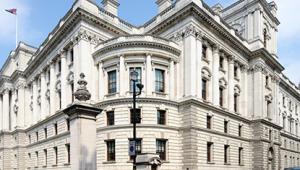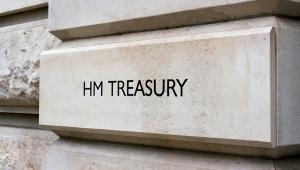It said that, after the global financial crisis of 2007-08 and now Covid-19, the economy has now been hit by two “once-in-a-lifetime” shocks in just over a decade, with potential implications for future fiscal strategy. The OBR said: “This may just be bad luck, but it could also indicate that very large shocks may be more common than we have previously assumed.
“If the periodic damage done to the public finances by such shocks is getting larger and more frequent, policymakers may need to re-evaluate what constitutes prudent policy during normal times.”
The OBR said government action to provide financial support to individuals and businesses had prevented severe strain on the banking system which would have otherwise arisen from increased loan defaults.
It said: “It seems implausible that the financial sector could ever be totally resilient to extreme events such as a major pandemic, so the need for the state to act as an ‘insurer of last resort’ will remain.
“The government’s future fiscal strategy will need to take account of this risk.” Government borrowing is set to rise to between 13% and 21% of GDP, lifting total government debt above 100% of GDP in each of the three scenarios outlined by the OBR.
The most optimistic scenario would see the economy rebounding to its pre-virus peak by the first quarter of next year, while the most pessimistic scenario would not see a full recovery until the third quarter of 2024.
The fiscal watchdog’s central scenario, puts public sector net borrowing at £322bn for 2020-21. However, it said this figure excluded announcements made last week by chancellor Rishi Sunak that it estimates will cost a further £51.4bn. Despite the huge rise in borrowing, the OBR’s central scenario assumes a fall in debt interest payments due to lower interest rates and inflation.
It said: “Central government debt interest net of quantitative easing effects is £13.9bn lower than our March forecast in 2020-21 and still £7.3bn lower by 2024-25.
However, structural fiscal damage implied by the OBR’s central and downside scenarios, longer-term pressures on spending, and a range of other fiscal risks we identify means that “it seems likely that there will be a need to raise tax revenues and/or reduce spending (as a share of national income) to put the public finances on a sustainable path”.
A separate report by the Office for National Statistics today revealed that GDP fell by 19.1% in the three months to May 2020, following falls of 10.8% in April and 2.2% in March.
Ian Stewart, chief economist at Deloitte, said: “The bounceback from Covid-19 has got off to a disappointing start. The pace of activity will have picked up sharply in June as the easing of the lockdown got underway. The chances of a quick return to normal, of the famed V-shaped recovery, are falling.
“It is likely to take years, not months, to repair the damage to the economy done by Covid-19.”











